In October, I wrote about a major detour in the evolutionary arc of the SARS-CoV-2 virus, from a series of recombinants known as the XBBs over a year to BA.2.86, a descendant of an early Omicron (BA.2), and its derivative JN.1 which added a pivotal spike mutation (L455S).
As it turns out, about 6 weeks later, this variant, first spotted up by Dave McNally, a UK data scientist, has proceeded towards global dominance. By mid-November here is the exponential growth seen in several countries in Europe, as posted by Ryan Hisner. Recall that it takes a level of 50% or greater to see the real impact in terms of clinical outcomes such as hospitalizations. By the end of November, this variant, as noted by Mike Honey, had reached >50% in Denmark, where SARS-CoV-2 sequencing is still extensive, and likely the other countries that were already above 20% below. The same pattern is being seen throughout Europe, including The Netherlands, Ireland, and many other countries not included on the graph.
The rapid growth across Europe is no surprise, if you take into account the decided growth advantage that JN.1 has (far left) over all the others currently or previously circulating. Graph via Ben Murrell at the Karolinska Institute in Sweden.
The wastewater SARS-CoV-2 surge in Austria, as noted by Ulrich Elling, surely reflects this, too.
It’s not just, Europe, of course. This variant is taking off in Australia, New Zealand, China, Japan and other places, as seen from 27 November graphic below from our outbreak.info tracking at Scripps Research. By December 5th there were already >4,000 sequences of JN.1 submitted globally, as posted by Andrew Urquhart,
Now let’s turn to the United States, where Jay Weiland, my friend, data scientist and modeler, has been all over this rise of JN.1 for weeks. Remember that we were concerned about the hyper-mutated BA.2.86, its predecessor, but it turned out not to have much growth advantage. That’s remarkably different with the new mutations (especially L455S) seen in JN.1
Take a look at the wastewater levels in the US, as Jay highlighted, with regional surges in the Midwest and Northeast.
And here’s Jay’s estimate of 4 December for the present case level based on those data. The slope of the rise is especially noteworthy, as is the comparison to some earlier waves.
We’re well below 50% JN.1 throughout the US, so the wave is just getting rooted. Of course, it cannot be solely ascribed to the variant, since colder weather in these northern regions, with more indoor congregation, lack of mitigation, and the Thanksgiving holiday gatherings may well be contributing factors too.
Nonetheless, there is the beginning of a rise in Covid hospitalizations across the country, with the level by late November exceeding 20,000 new admissions per week, which, as a lagging metric, will inevitably rise.
And further evolution of JN.1 is already occurring, with the detection of the SLip variants, as shown by Daniele Focosi’s latest graphic below—that’s the added spike S456L mutation adjacent to L455S (which was the one that BA.2.86→ JN.1). The point here is that JN.1’s path to dominance is by no means signaling any pause in further evolution of SARS-CoV-2.
The Good News
Unexpectedly, given the marked difference in mutations between XBB.1.5, the target of the monovalent “updated” booster compared with JN.1, there is very good cross-recativty as demonstrated in 3 highly regarded labs (Yunlong Cao’s in Peking, David Ho’s at Columbia and David Veesler’s at U Washington). These labs have preprint published data showing solid levels of neutralizing antibodies for the XBB.1.5 booster against JN.1, our best surrogate marker for protection vs severe Covid (hospitalizations and deaths). From the Ho lab report, note the similarity of levels of neutralizing antibodies for XBB.1.5 boosters (Pfizer or Moderna) as seen with JN.1. We’d expect the same for the Novavax booster which was not assessed in that study.
This is lucky. Actually damn lucky if you look at the profound differences in sequence (across the spike below) for the booster’s XBB.1.5 target compared with JN.1. These major differences between XBB.1.5 and JN.1 extend well beyond the spike.
Given this anticipated protection of the booster vs JN.1—which was not anticipated—a strong case is made to get a booster, even though to date only 16% of eligible American adults have done so. If you haven’t, this would be a good time to get ready for the wave ahead, especially if you’re in a high-risk group such as advanced age, immunocompromised, or with co-existing conditions.
Greatly appreciative of the work of Jay Weiland, Ryan Hisner, Dave McNally, Daniele Focosi, Ulrich Elling, Mike Honey, Federico Gueli, Ben Murrell, Andrew Urquhart, and so many others who continue to carefully track the virus.
Thanks for reading Ground Truths. Please share the post to others who might benefit from this information.




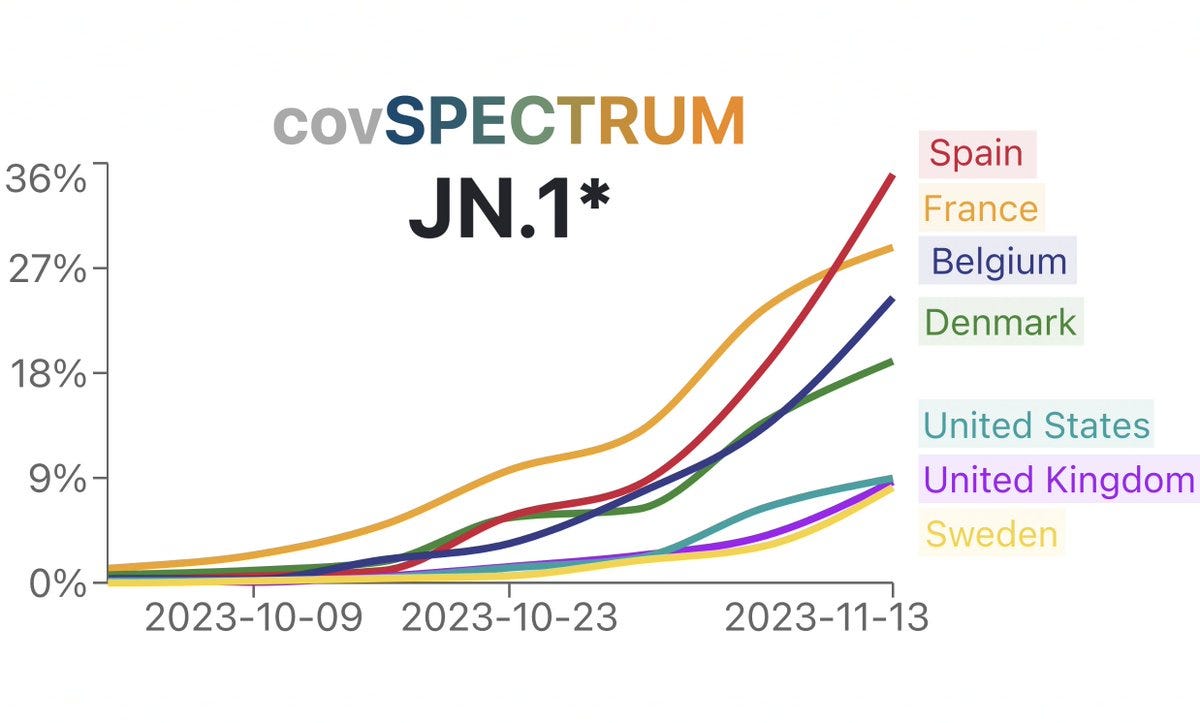
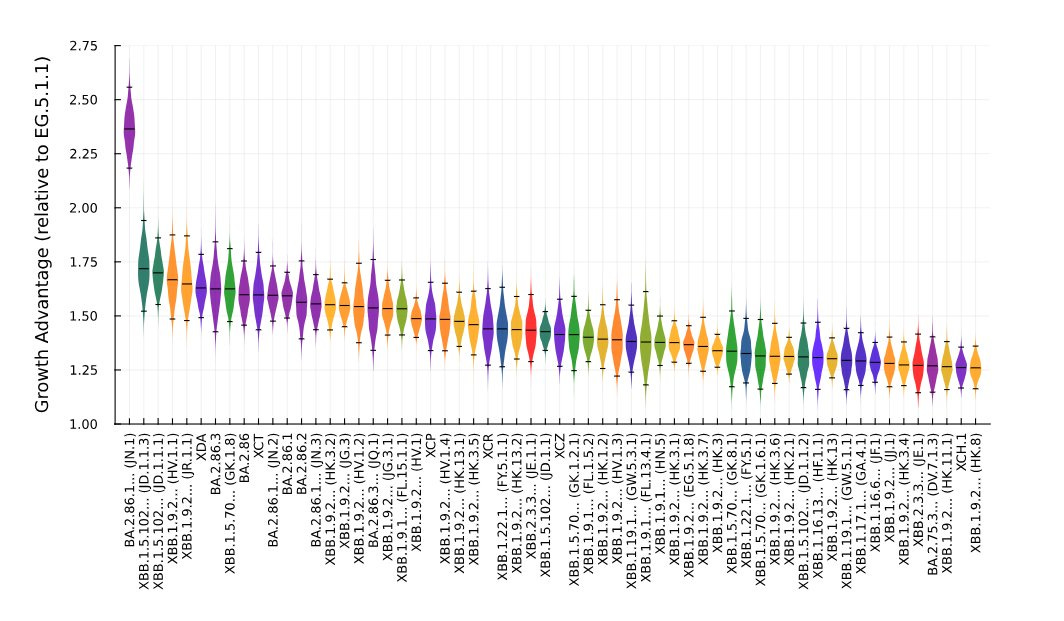


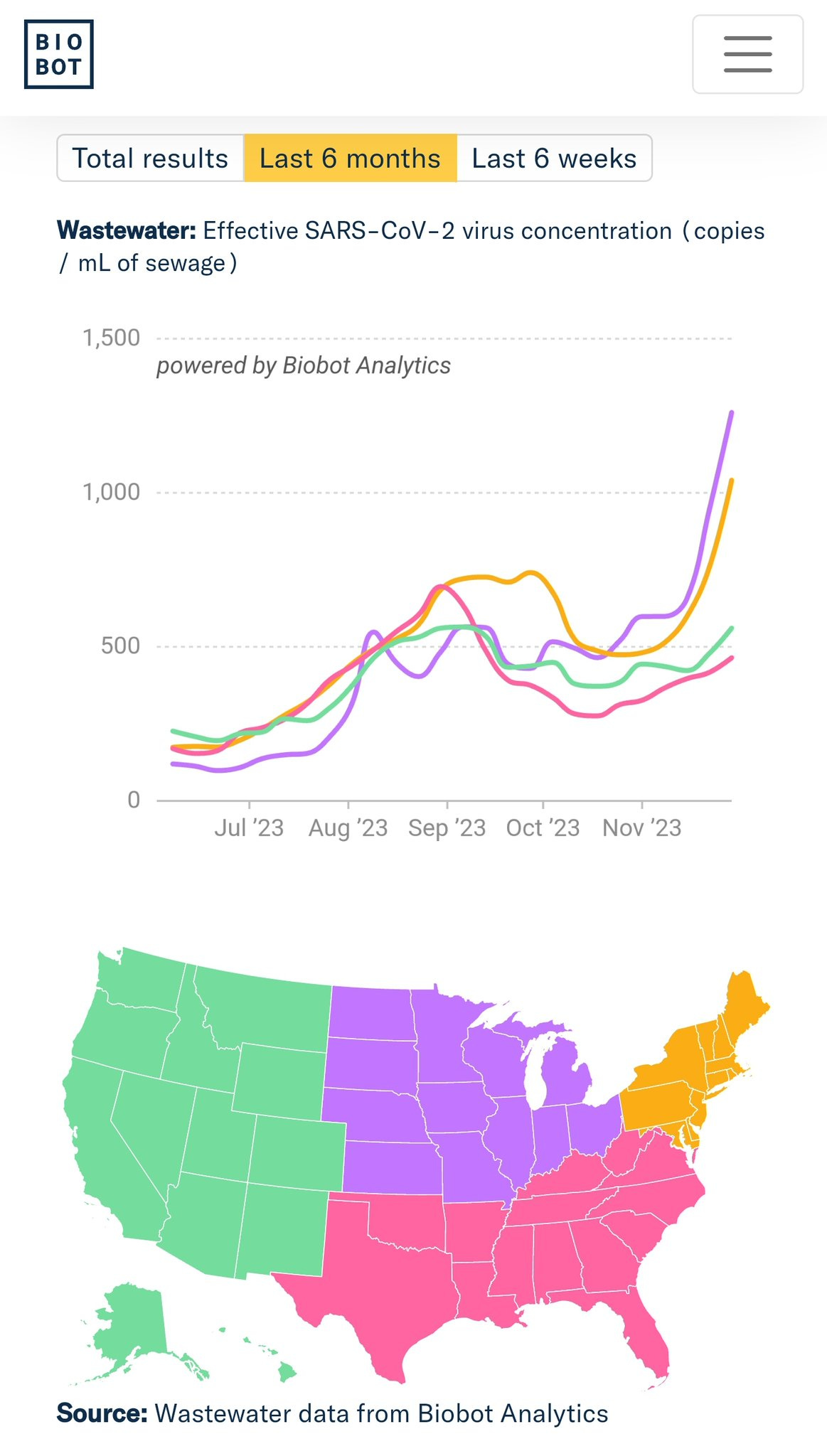
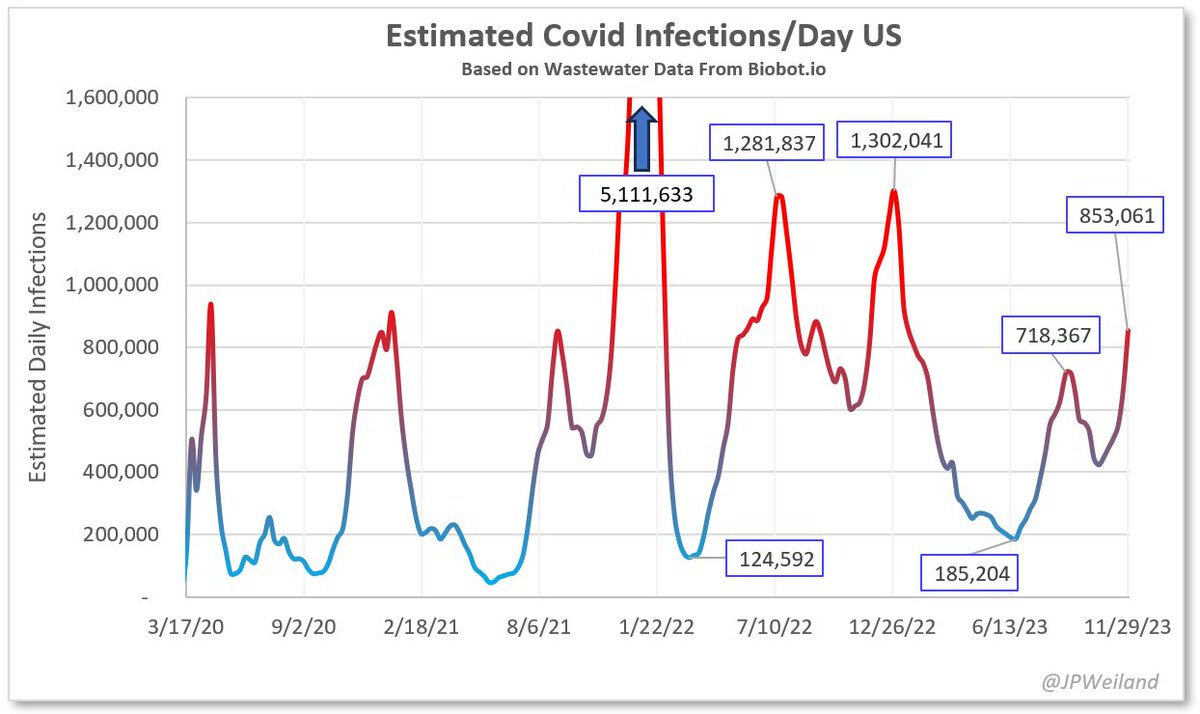
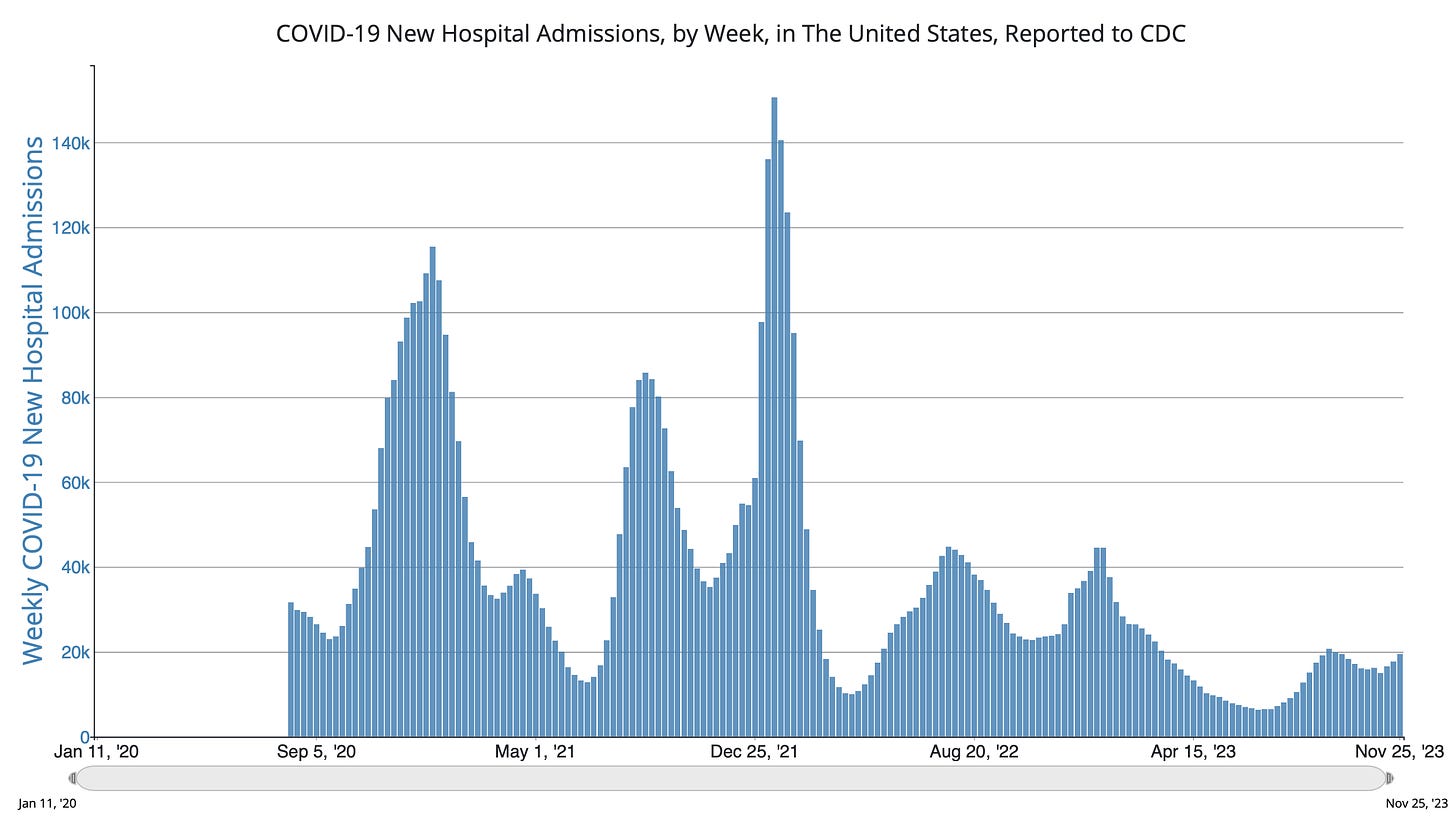
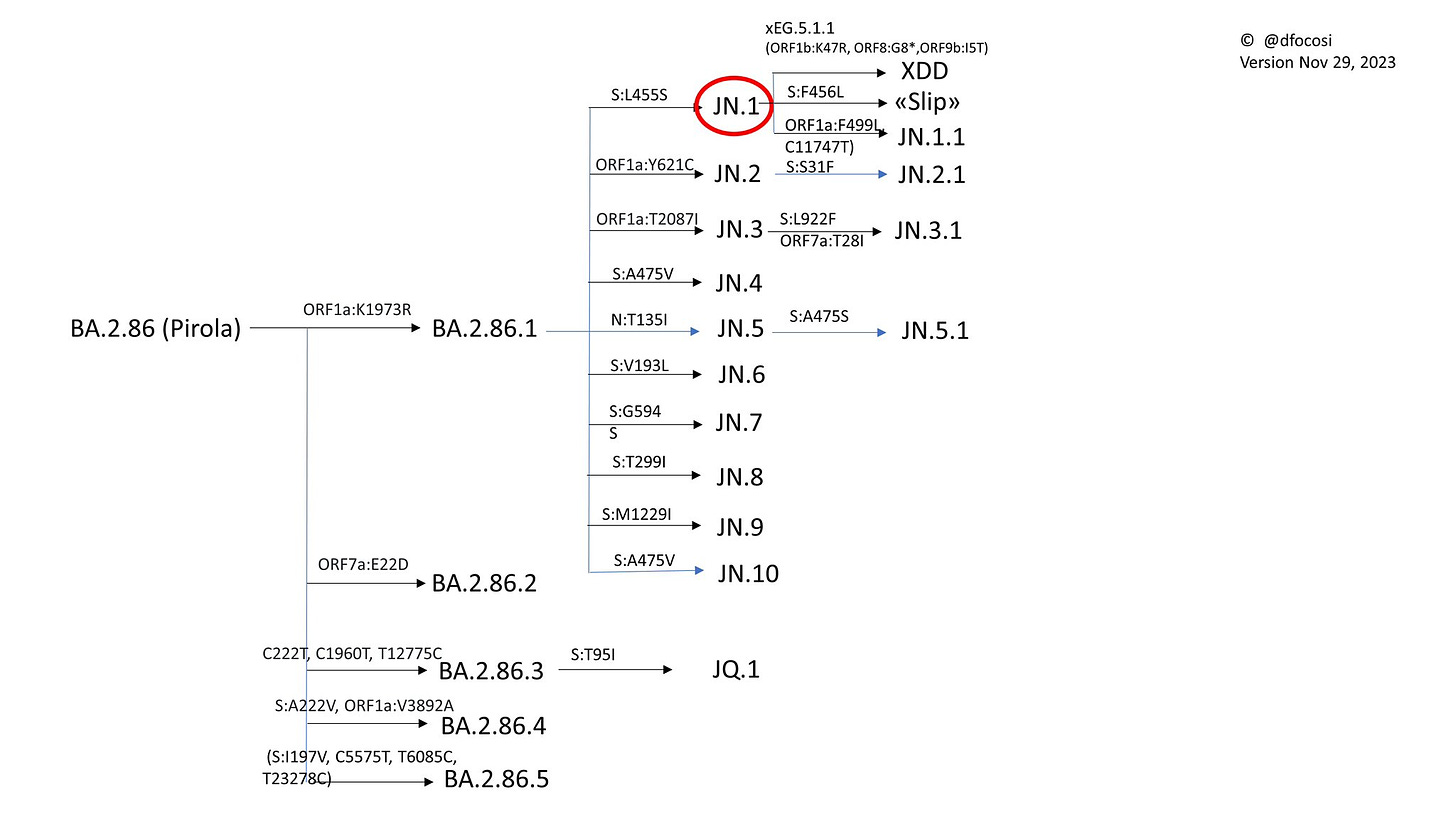
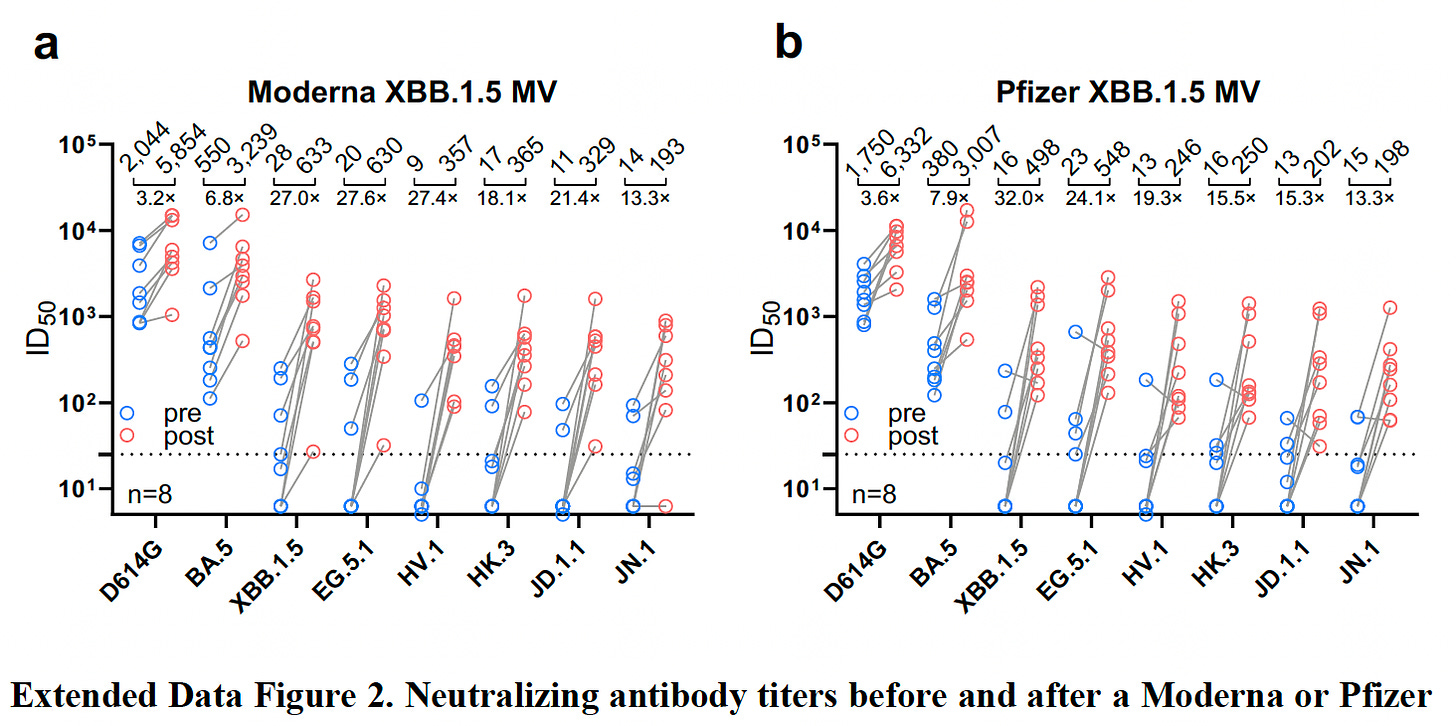

For those of us who both immunosupressed and older, is there any consideration being given--and if not, whould it be given, to repeat vaccines ? I had my last in September.
Excellent reporting. You just persuaded me to get a paid yearly subscription. Keep up the good work!